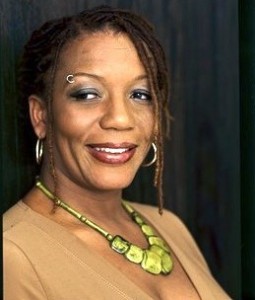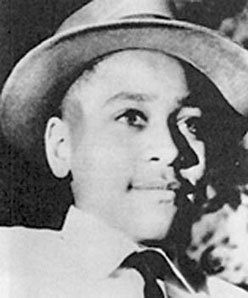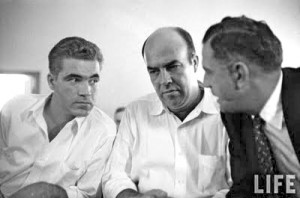“Listen, if you choose to believe nothing else that transpires here, believe this: your body does not have a soul; your soul has a body, and souls never, ever die.”
 Mixing the supernatural with dramatic and horrifying realism, this generational novel contains all the ingredients necessary to become a huge popular success. Spanning the years between the 1920s and the present, author Bernice L. McFadden focuses on three generations of the Hilson family as they interact with each other, with others in their segregated neighborhood, and with the white world beyond. Using the town of Money, Mississippi, itself as the “narrator,” the author creates lively scenes involving Reverend August Hilson, new pastor of the only black church, and his family, who have escaped the violence of Tulsa to settle in this small town near Greenwood, Mississippi, along the Tallahatchee River.
Mixing the supernatural with dramatic and horrifying realism, this generational novel contains all the ingredients necessary to become a huge popular success. Spanning the years between the 1920s and the present, author Bernice L. McFadden focuses on three generations of the Hilson family as they interact with each other, with others in their segregated neighborhood, and with the white world beyond. Using the town of Money, Mississippi, itself as the “narrator,” the author creates lively scenes involving Reverend August Hilson, new pastor of the only black church, and his family, who have escaped the violence of Tulsa to settle in this small town near Greenwood, Mississippi, along the Tallahatchee River.
With the beautiful Doll as his wife, however, Rev. Hilson will never be able to feel very settled anywhere. Doll has a “history,” the recreation of which will keep even a jaded reader involved in her story, and she has accompanied him to Money “draped in crinoline and silk; carrying a pink parasol in one hand and a Bible in the other.” Those who knew her in Tulsa al ways believed that the evil spirit of her mother, a murdered prostitute named Esther Gold, had taken over Doll’s body, and though, as a child, Doll was duly exorcised by a local witch, that expert in herbs and potions proved to be no match for the voracious, single-minded Doll. By the time she arrives in Money, she and August have been married six years and are the parents of a daughter, Hemmingway, and a son, Paris. In Money, Doll continues to do just what she wants, and everyone else better watch out.
ways believed that the evil spirit of her mother, a murdered prostitute named Esther Gold, had taken over Doll’s body, and though, as a child, Doll was duly exorcised by a local witch, that expert in herbs and potions proved to be no match for the voracious, single-minded Doll. By the time she arrives in Money, she and August have been married six years and are the parents of a daughter, Hemmingway, and a son, Paris. In Money, Doll continues to do just what she wants, and everyone else better watch out.
The novel is not linear, with the action swirling around in time and among characters. A new set of characters is introduced with Cole Robert Payne, son of a white sharecropper, and married to Melinda, the shy and sickly daughter of one of the town’s landowners. As Cole’s history unwinds, the first interracial relationship of the novel comes alive. Cole and Sissy, a childhood friend, had been bloodbrother/-sister before puberty complicated their lives. Doll enters the picture when she arrives to cure Cole’s wife Melinda of a fever and help her deal with five miscarriages.

Levee breaks, 1927 Flood
By 1927, a historic storm is on its way through Money. The white leaders of the community forcibly round up all the black men in town, requiring them to pack and stack sandbags in preparation for a flood, the results of which change the lives of most of the characters. The spirit of Doll’s mother Esther enters yet another character, and then still another, as some major characters disappear, only to have their evil spirits reappear in new guises. So strong is this spirit that even the dead come alive when seized by Esther.

The novel takes a new turn when Cole Payne decides to pursue his interest in native American culture and travel to the west coast. Upon his return he finds Charlotte Custer, purportedly the granddaughter of Gen. George Armstrong Custer and a native woman, waiting to meet him, a convenient digression which is fun to read but which seems gratuitous, rather than essential to the overall themes and direction of the novel.
When the action reaches the 1950s, the author concentrates on the biggest event in the history of Money, Mississippi, the death of fourteen-year-old Emmett Till, visiting from Chicago and tortured to death by whites because he supposedly whistled at a white woman. An event which some believe to be the most significant event in the lead-up to the civil rights movement in the United States, the death of Emmett Till is treated as just one event among many in this novel, important but not the only important event occurring in Money, Mississsippi, at the time. The spirit of Esther continues up to the present as Hurricane Katrina arrives.

Emmet Till, 1955
Author Bernice McFadden’s voice – or, rather, the voice of the town of Money, Mississippi – never wavers from the casual, down-to-earth story-telling of someone/something anxious to enlighten and entertain the reader with a good story. Each monumental event is treated in a relaxed, almost casual way – as just one more element in the history of a multi-racial town, regardless of how unusual or horrific it may be, thereby increasing the shock and horror for the reader. The dialogue is so realistic it is easy to imagine the characters, some of whom are more fully realized as examples than as individuals, though some readers may feel the use of the town itself as the speaker is artificial and distracting. Water is a major image throughout the novel, even extending to its title, and the way the author ultimately brings all elements of the novel together in the conclusion as Hurricane Katrina looms, is satisfying.

Roy Bryant and his half-brother J. W. Milam confer with their lawyer during their trial for murder
Filled with action, unusual characters, and a combination of reality and the supernatural, the novel never loses its focus on telling a good story. McFadden makes even the death of Emmett Till, however horrifying, seem “normal” within the overwhelming prejudices of Money, Mississippi, and she matches her seemingly simple style with her relatively simple characters. What is not simple about this novel, however, is its single-minded devotion to a thematic unity, the belief that racial harmony is possible if one ignores the differences and concentrates on the common values. “Whether you have embraced this tale as truth or fantasy, I hope you will take something away from having read it,” the narrator says in the conclusion. “I pray that you will become more sensitive to the world around you, the seen and the unseen. As you go about your lives, keep in mind that an evil act can ruin generations, and gestures of love andkindness will survive and thrive forever.”
Photos, in order: The author’s photo appears on http://blacklitchat.blogspot.com
The levee breaks during the 1927 flood: http://ryanseacrest.com
In one of the great ironies, the only book I was able to find detailing the relationship of Gen. Custer and the Native American Monahseetah is on an Italian site devoted to the American Far West: http://www.farwest.it
Emmett Till’s photo from 1955, showing him as the young naive boy he appears to be in this novel: from http://abagond.wordpress.com
The Life magazine cover shows Roy Bryant and his half-brother J. W. Milam, accused of murdering Emmett Till, conferring with their lawyer. http://usslave.blogspot.com
